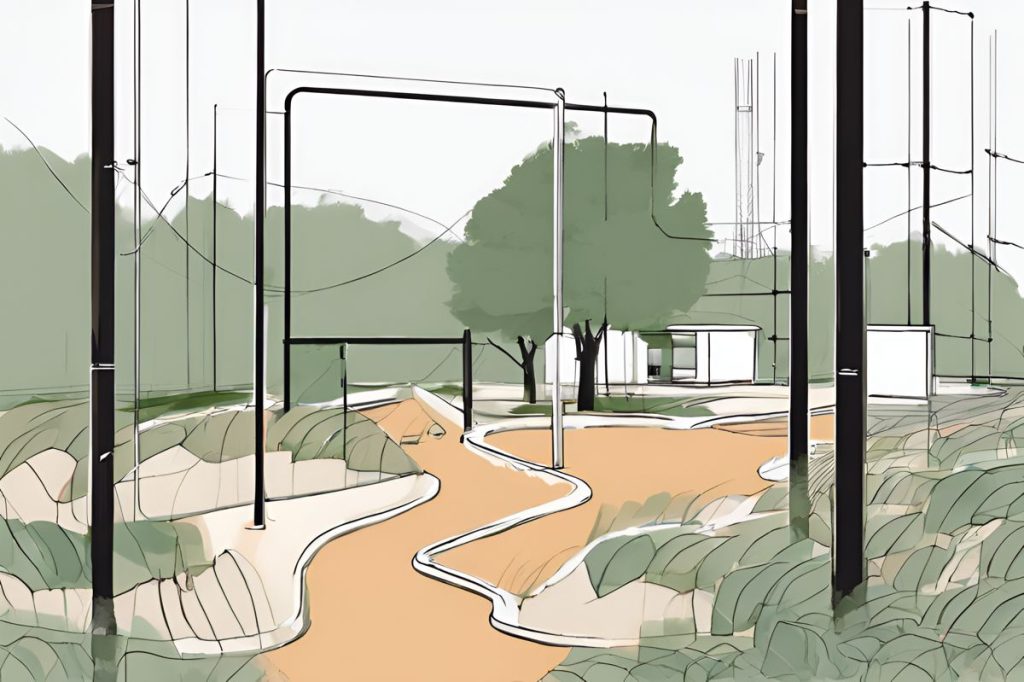Construction of a new monastery in Ayia Napa’s Natura 2000 site has sparked environmental concerns due to lack of proper sanctions, potentially damaging biodiversity. The incident underscores the tensions between development and environmental conservation, highlighting the importance of preserving protected areas for the benefit of rare species and habitats.
Why has construction of a new monastery in Ayia Napa caused environmental concerns?
Construction of a monastery within Ayia Napa’s Natura 2000 site, home to rare species and habitats, lacked proper sanctions, prompting investigations. Work began without planning permissions, potentially damaging biodiversity and violating EU protection laws. The incident highlights challenges between development and environmental conservation.
Preservation of Natura 2000 Sites
Ayia Napa, known for its pristine beaches and vibrant nightlife, now finds itself embroiled in an environmental controversy. The construction of a new monastery within the bounds of a protected area has sparked an investigation. The Natura 2000 network, a network of nature protection areas within the territory of the European Union, has designated the site at Cape Greco as environmentally sensitive. This designation is given to locations that are home to rare or endangered species and habitats, and as such, they are afforded special protection under EU law.
The construction project, which had advanced considerably before coming under scrutiny, was undertaken on land that falls entirely within these protected zones. The importance of these areas cannot be overstated; they are critical in maintaining biodiversity, providing a safe haven for native flora and fauna, and offering natural services such as water purification and climate regulation.
Regulatory Response and Environmental Impact
Concerns were raised when deputy environmental department director Elena Stylianopoulou announced that the works, now ceased, had commenced without appropriate sanctions and had reached an advanced state. This revelation came after a complaint prompted the environmental department to inspect the site, leading to a halt issued by the Famagusta planning authorities.
The consequences of these unauthorized works could be severe, with the potential degradation of habitats and disturbance to wildlife. In fact, the Game and Fauna Service responded to these concerns by issuing an extrajudicial fine for these very reasons. The fine aimed to address the negative impact on habitats, particularly the disturbance to wild fauna, which is protected under legislation for the conservation of wild birds.
Stylianopoulou highlighted the difficulties in assessing the environmental impact after the fact. She noted that once construction is underway, the baseline conditions change, making it challenging to measure the true extent of the damage. Historical data on the pre-construction state of the environment is crucial for such assessments, but when construction begins without proper oversight, this information may be incomplete or altogether missing.
Legal and Community Repercussions
It was discovered that the church had initiated the construction without any formal permits from the planning department. This land, while designated as forest land, had been cultivated, yet the construction still stands contrary to local land use regulations. Actions are being taken to address this violation, including communication with both the municipal planning department and the landowner, the Bishopric of Famagusta.
This incident adds to the series of environmental concerns in Ayia Napa, following close on the heels of another case at Ammos tou Kambouri, which involved land modification to create a beach. That event has already drawn severe criticism and is under investigation by local MPs, who are preparing a comprehensive report on the matter.
As these situations unfold, they underscore the delicate balance between development and environmental conservation. It is a reminder that while progress is essential, it must not come at the cost of irrevocably damaging the natural world which we all depend upon for our well-being and that of future generations.
Why has construction of a new monastery in Ayia Napa caused environmental concerns?
Construction of a monastery within Ayia Napa’s Natura 2000 site, home to rare species and habitats, lacked proper sanctions, prompting investigations. Work began without planning permissions, potentially damaging biodiversity and violating EU protection laws. The incident highlights challenges between development and environmental conservation.
What is the significance of Natura 2000 sites like the one in Ayia Napa?
Natura 2000 sites are designated areas within the European Union that are crucial for protecting rare or endangered species and habitats. These areas are afforded special protection under EU law to maintain biodiversity and provide important natural services such as water purification and climate regulation. Construction within these sites can lead to severe environmental consequences.
How has the regulatory response addressed the unauthorized construction in Ayia Napa?
The construction in Ayia Napa began without appropriate permits and reached an advanced stage before coming under scrutiny. Deputy environmental department director Elena Stylianopoulou announced that the works had commenced without proper sanctions, prompting a halt by the Famagusta planning authorities. The Game and Fauna Service issued an extrajudicial fine to address the negative impact on habitats and wildlife, emphasizing the importance of conservation laws.
What legal and community repercussions have arisen from the monastery construction in Ayia Napa?
The church initiated construction without formal permits, violating local land use regulations and causing community backlash. Efforts are being made to address this violation, including communication with municipal planning departments and the landowner, the Bishopric of Famagusta. This incident adds to a series of environmental concerns in Ayia Napa, highlighting the delicate balance between development and environmental conservation.

